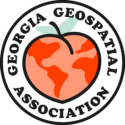Title: Introduction to GNSS
- Instructor: Tripp Corbin
- Date: October 3rd, 2016
- Length: Full Day
- Time: 8:00am – 5:00pm
- Location: Athens Classic Center
Workshop Description: The use of the Global Navigation Satellite System (GNSS) has become pervasive in the GIS and Surveying communities, and with anyone who needs or collects data that has a geographic or locational component. Local, state and federal agencies regularly use it for a myriad of purposes including E911, utility locations, pavement inventories, biological studies and more. In the private sector, surveyors, GIS data collectors and other consultants use GNSS in their everyday work. Even hikers, boaters and hunters rely on GNSS to document their fishing holes, hunting blinds and to leave virtual bread crumb trails. This data finds its way into thousands of different databases and maps and is used in every conceivable application. GNSS is a highly specialized technology that, by its very nature, is prone to accidental misapplication; and it will produce inaccurate results that are not recognized to the untrained user. This workshop will, in a non-technical, yet thorough manner, explore the GNSS satellite constellations, how geographic positions are determined, sources of errors in GNSS data collection, and the types of receivers with the goal of arming users with the ability to achieve the results they expect and need in their work. Specific topics include:
- The Global Navigation Satellite System – satellites, control and receivers
- How GNSS works – Measurements from 12,000 miles up
- Latitude and Longitude
- Factors affecting the accuracy of GNSS measurements
- Determining the accuracy of my GNSS measurements
- How to obtain more accurate results
- Types of GPS receivers
- Methods of making GNSS measurements – Static, Rapid Static, RTK
- GPS, GLONASS and other Global Navigation Satellite
